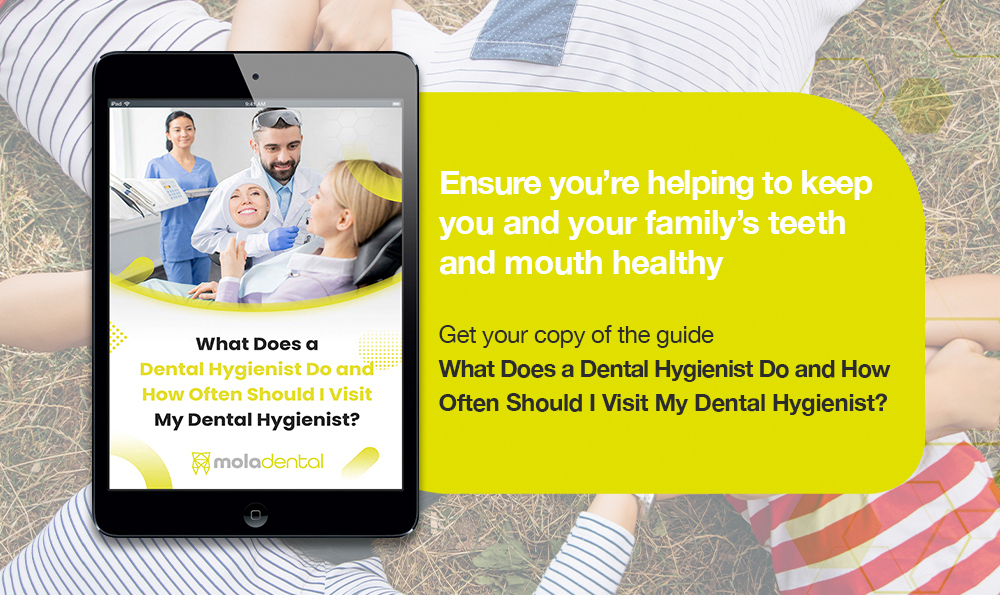You may know periodontal disease as it is more commonly known, gum disease. It’s a serious gum infection that damages the soft tissue and, without treatment, can destroy the bone that provides support to your teeth. Not only this, but when periodontal disease is left untreated, it can loosen the teeth and lead to tooth loss.
Severe periodontal disease is common, with almost 10% of the global population affected. However, it is largely preventable. Periodontal disease is most commonly the result of poor oral hygiene, when you neglect regular brushing, flossing, and attending dental check-ups. By maintaining good oral hygiene at home, you reduce your chances of developing it. But if you do have periodontal disease, it can be treated.
How Periodontal Disease Develops
Prevention is easy; you simply must visit your dentist as often as you’re advised to and practice good oral hygiene. By not maintaining good oral hygiene, you risk developing plaque. And if you develop gingivitis and do not have the plaque or tartar (hardened plaque) removed from your teeth, the condition can worsen and lead to periodontitis.
Things that can Increase your Risk of Periodontal Disease
The more awareness and education you have about this, the more you can do towards prevention. Many things can increase your risk, which includes:
- Gingivitis
- Poor oral health habits
- Smoking or chewing tobacco
- Hormonal changes (such as those related to pregnancy or menopause)
- Recreational drug use (such as smoking marijuana or vaping)
- Obesity
- Inadequate nutrition (including vitamin C deficiency)
- Genetics
- Certain medications that cause dry mouth or gum changes
- Conditions that cause decreased immunity (such as leukaemia, HIV/AIDS, and cancer treatment)
- Certain diseases (such as diabetes, rheumatoid arthritis, and Crohn’s disease)
If you’re worried about contracting periodontal disease, it’s best to speak to your dentist.
Treatment
The severity of your periodontal disease impacts what sort of treatment you require. If your periodontitis infection spreads to your bone and supporting tissues, your teeth may become loose and need removal. However, even advanced cases of periodontal disease don’t have to progress to this point.
Non-Surgical Treatment
The first port of call when treating periodontal disease is a non-surgical approach. Scaling and root planing are where your dentist or dental hygienist scrapes and removes plaque and tartar from your teeth and root surfaces. Local anaesthetic can be used during this procedure to prevent any discomfort. Specialist tools allows your dentist to smooth away any roughness which may have developed on the roots of your teeth, which prevents bacteria from easily gathering again.
Depending on the amount of plaque and tartar, this treatment can sometimes take more than one visit. After the process is complete, your gums will heal and attach themselves to your teeth’s now healthy, clean surfaces.
Pocket Reduction Procedure
If you have suffered from a more severe case of periodontal disease, the gum tissue might not fit snugly around the teeth after scaling and planing, and you may not be able to keep the deep pocket area clean. This means you’ll require periodontal pocket reduction or flap surgery. Your dentist will fold back the gum tissue, removing infectious bacteria and smoothing any areas on damaged bone. Once complete, your gum tissue will reattach to healthy bone.
Gum Grafts
Suppose your periodontal disease has led to gum recession and caused exposed roots, if this is the case, you will require a gum graft.
During this process, your dentist will take gum tissue from your palate or another source and use it to cover the roots of your teeth. Reducing sensitivity and protecting your roots from decay whilst stopping any further gum recession and bone loss.
Clearing a Periodontal Abscess
If your gum disease has gone untreated for an extended period of time, it can lead to a periodontal abscess. This abscess appears as a red, swollen lesion on your gum line. Treatment involves draining the abscess and deep cleaning the area. In some cases, your dentist might recommend antibiotics to ensure the infection is clear.
Pericoronitis
Typically, periodontal disease occurs when a person has poor oral hygiene and allows plaque to build up. However, this is not the only cause. A gum infection can happen when a tooth (typically a wisdom tooth) tries to erupt but becomes stuck or lodged.
In this situation, a small flap forms over the trapped tooth, and if food becomes lodged in this gum flap, bacteria can soon follow, leading to an infection. If you’re suffering from periodontal disease of this nature, your dentist will clean the area using a salt rinse and then perhaps prescribe antibiotics if any bacteria are lingering.
Regenerative Procedure
As mentioned, if left untreated, periodontal disease can lead to the bone which surrounds the teeth decaying. To repair the decaying bone, your dentist may recommend bone grafting.
During this treatment, your dentist will clean the infected area from bacteria and place either natural or synthetic bone in the area where bone has been lost. Your dentist will include tissue stimulating proteins to encourage your body to regrow bone and tissue effectively.
How can Mola Dental help?
We’re proud to be one of the very few practices in the area equipped to help with periodontal disease. Our very own Dr Michael Goodman is one of the few clinicians in Sheffield with advanced training in the management of periodontal disease and can offer treatment or therapy, thereby helping to prevent tooth loss. If you’re looking to treat periodontal disease in Sheffield, give one of our friendly receptionists a call on 0114 317 7002.
Or, if you’re based in Sheffield, and you’re looking to register with a dentist, we’re now taking on new clients! To register your interest, click here.


